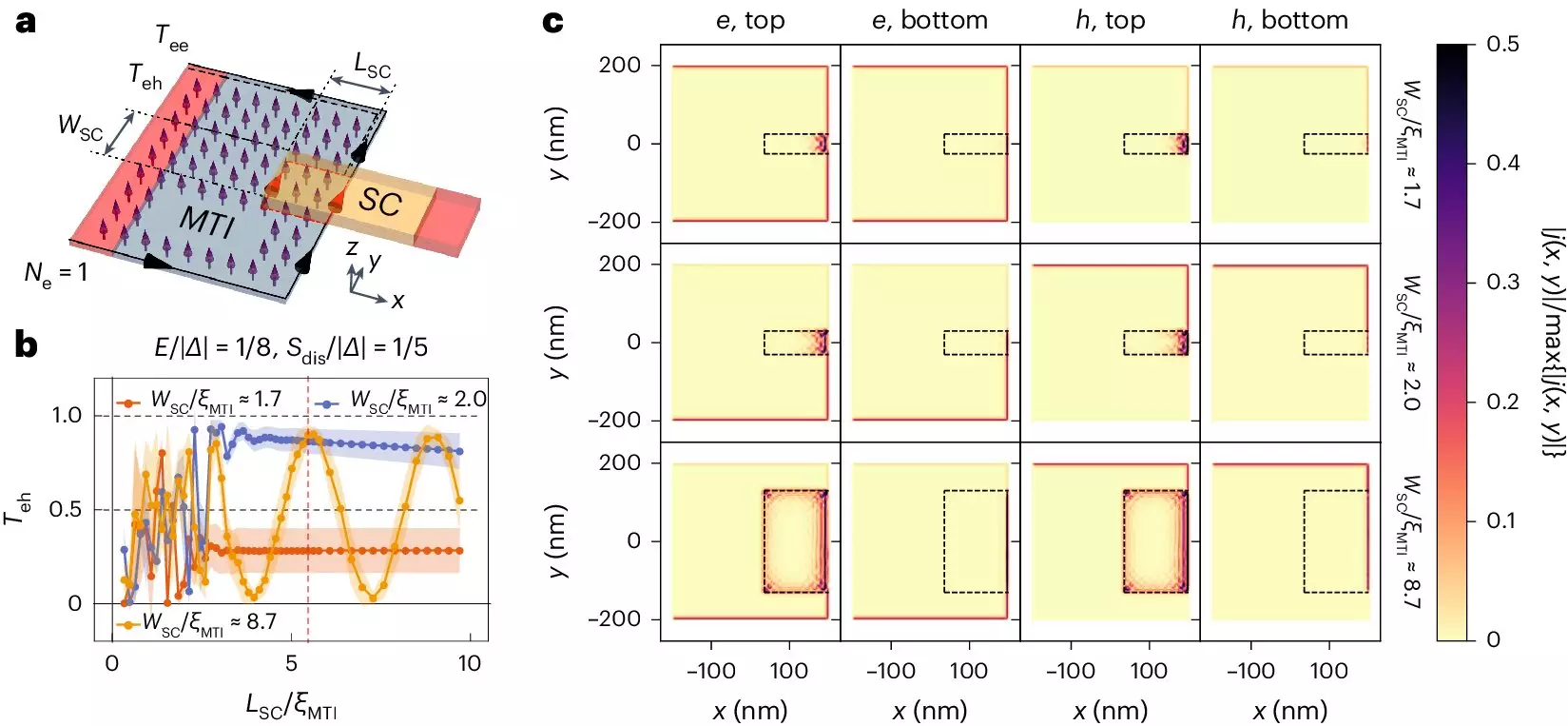The field of quantum computing has taken a significant leap forward thanks to a team of experimental physicists from the University of Cologne. Their groundbreaking research has demonstrated the ability to generate superconducting effects in materials with unique edge-only electrical properties. This discovery has opened up a new avenue for exploring advanced quantum states that could play a pivotal role in the development of stable and efficient quantum computers.
Superconductivity, a phenomenon where electricity flows without resistance in certain materials, and the quantum anomalous Hall effect, which causes zero resistance confined to the edges, are two distinct yet fascinating phenomena. The combination of these two phenomena is predicted to give rise to topologically protected particles known as Majorana fermions. These particles have the potential to revolutionize future technologies, specifically quantum computers.
The research team, led by Professor Dr. Yoichi Ando at the University of Cologne, successfully induced superconductivity in the edge of a quantum anomalous Hall insulator. This induced chiral Majorana edge state is a crucial step towards realizing “flying qubits” that are topologically protected. The concept of crossed Andreev reflection played a key role in the detection of induced superconductivity in the topological edge state.
This achievement did not come easily, as evidenced by the five years of hard work put in by the researchers. Previous attempts by other groups over the past decade had failed to accomplish what this team has achieved. The success of this experiment can be attributed to the meticulous approach taken by the Cologne group, from film deposition to device fabrication, all conducted in the same laboratory.
Collaboration played a significant role in the success of this research. The University of Cologne team worked closely with colleagues from KU Leuven, the University of Basel, and Forschungszentrum Jülich. The theoretical support provided by the joint Cluster of Excellence Matter and Light for Quantum Computing (ML4Q) was instrumental in facilitating this breakthrough.
This discovery paves the way for future research in the field of quantum computing. The next steps involve conducting experiments to directly confirm the emergence of chiral Majorana fermions and to further investigate their exotic nature. By harnessing topological superconductivity and chiral Majorana edge states, quantum computing could be revolutionized, offering more stable qubits that are less susceptible to decoherence and information loss.
The research conducted by the University of Cologne team has laid the foundation for a more robust and scalable approach to quantum computing. The platform demonstrated in this study holds promise for the future development of quantum computers that could transform the way we process information and solve complex problems.


Leave a Reply